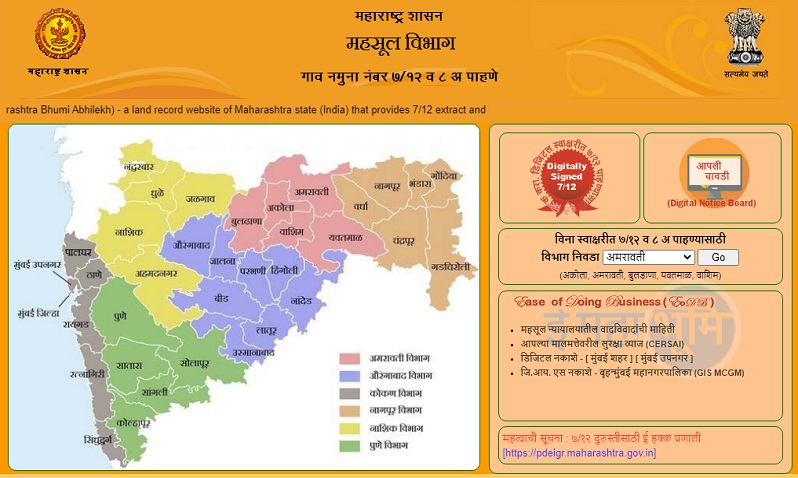We can begin by knowing that Bhulekh comes from the Sanskrit word – Bhu Alekh. It can be translated into English too, Land Record. Several State governments, like Orissa, UP, Bihar, etc. use it as a term for their online land record software also. This system of land record keeping has been used since the time of the Mughals.
Mahabhulekh
In 2008, the government of India started this system under the National Land Records Modernization Programme (NLPMP) State Governments maintain these land records, to make the system more accurate and user friendly. With the help of this system, people can access a lot of information about lands, such as their Khasra-khatauni, jamabandi (Record of Rights), the copy of jamabandi (nakal), fard, etc.
Bhulekh Mahabhumi 7/12 Utara Online
Understanding the 7/12 extract is pertinent to know about the Maharashtra Bhulekh.
- To buy any property in India, legally and free of any litigations and claims, many documents are required.
- In Maharashtra, one of those documents includes the 7/12 Extract. It required to purchase land in rural and semi-rural areas in the state, areas that do not yet have a city survey number.
- The 7/12 extract holds a lot of information about the land and its owner such as – Survey Number, Area, Date, Existing owner’s details.
- It called 7/12 extract because it contains surveys from two forms. Form 7 and Form 12.
- Saat-Baara-Utara is the regional term for it in Maharashtra.
- It also indicates the legal status of the land, its ancestral information, past disputes, litigations, court orders, etc.
- The 7/12 Utara maintained by the State Revenue Department for tax collection purposes.
- It issued by the Tehsildar or the concerned land authority. For more information and other updates check Timesalert.
Maha bhulekh
The online land website of the Maharashtra government called the Mahabhulekhan. Its official address is – bhulekh.mahabhumi.gov.in. The main purpose of the website is to provide 7/12 extract and 8A extract online to citizens.
This land record software system makes it easy to look for information on Maharashtrian land easily available online. The mahabhulekh known as Satbara, Apna Khata, and Ultra. On visiting the Mahabhulekh website, the user can gain access to the 7/12 extract and find the following information about the land:
- Land Ownership
- Type of Land (Agricultural or Non-Agricultural)
- Area of Land
- Survey number of land
- Name of the Land Cultivator (if it is an agricultural land)
- Types of crops cultivated
- Any encroachments or Encumbrances
- Land title litigation
How to view land details on the Mahabhulekh website
Below we have provided the steps for users to extract land information from the portal:
- Visit the official land records website
- Since Maharashtra divided into 6 areas (Amravati, Aurangabad, Pune, Nagpur, Nashik) the user should select from the map his/her boxed area.
- On selecting the section, choose between 7/12 or 8A Extract.
- After choosing 7/12 comes the district, taluka, and village selection, for which the records have to be obtained.
- The user can search the document by survey number or group number, first name, last name, and full name.
- Next, the 10 digits mobile number of the user has to be entered.
- Click on 7/12 and enter the captcha code.
- Then the Record sheet and the Crop register displayed.
- It should also be kept in mind that there is a limit to the number of times a 7/12 extract can be viewed from one mobile – 6.
- A free service provided by the government.
- However, landowners can get a premium to get a digitally signed 7/12 extract and Property card.
Maharashtra Bhumi Abhilekh
This user-friendly system can be helpful to landowners as well as property brokers, buyers in many ways, and it also has legal value, we bring some of them to you
- For selling or buying a piece of land.
- To open a bank account.
- To get a loan from a bank or any other financial institution.
- For solving and legal disputes or legal matters.
- To keep a personal record of the property.
- For a division of a piece of land.
- To track and check the land mutation status, if any.
Contents






